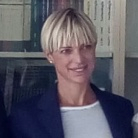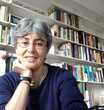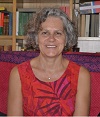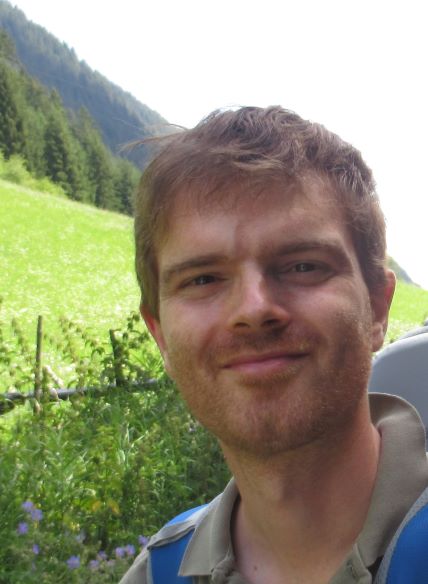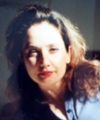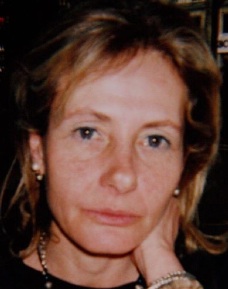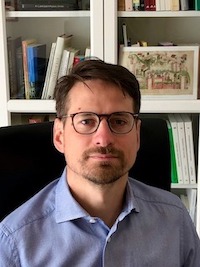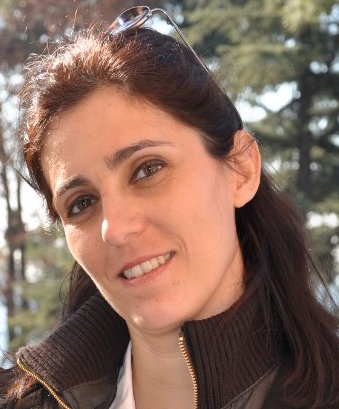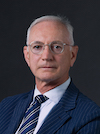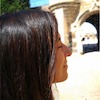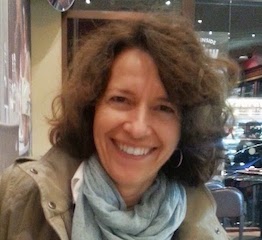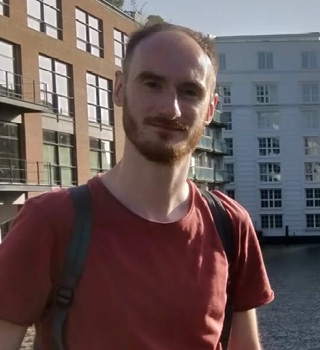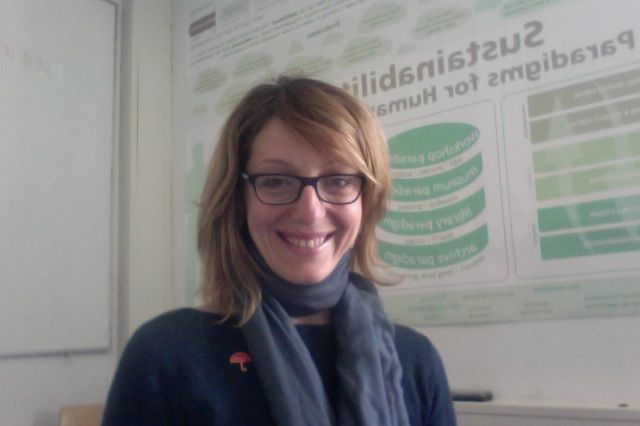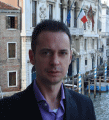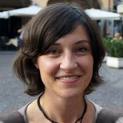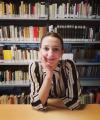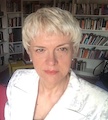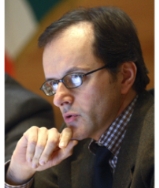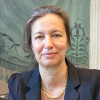Studying at the University of Verona
Here you can find information on the organisational aspects of the Programme, lecture timetables, learning activities and useful contact details for your time at the University, from enrolment to graduation.
Academic calendar
The academic calendar shows the deadlines and scheduled events that are relevant to students, teaching and technical-administrative staff of the University. Public holidays and University closures are also indicated. The academic year normally begins on 1 October each year and ends on 30 September of the following year.
Course calendar
The Academic Calendar sets out the degree programme lecture and exam timetables, as well as the relevant university closure dates..
| Period | From | To |
|---|---|---|
| Semester 1 | Oct 2, 2017 | Jan 20, 2018 |
| Semester 2 | Feb 26, 2018 | Jun 9, 2018 |
| Session | From | To |
|---|---|---|
| Winter session | Jan 22, 2018 | Feb 24, 2018 |
| Summer session | Jun 11, 2018 | Jul 28, 2018 |
| Autumn session | Aug 27, 2018 | Sep 22, 2018 |
| Session | From | To |
|---|---|---|
| LAUREE LINGUE - sessione autunnale a.a. 2016/2017 | Dec 18, 2017 | Dec 21, 2017 |
| LAUREE LINGUE - sessione invernale a.a. 2016/2017 | Mar 23, 2018 | Mar 29, 2018 |
| LAUREE LINGUE - sessione estiva | Jul 16, 2018 | Jul 21, 2018 |
| LAUREE LINGUE - sessione autunnale | Nov 12, 2018 | Nov 17, 2018 |
| LAUREE LINGUE - sessione invernale | Apr 12, 2019 | Apr 18, 2019 |
| Period | From | To |
|---|---|---|
| All Saints Day | Nov 1, 2017 | Nov 1, 2017 |
| Immaculate Conception | Dec 8, 2017 | Dec 8, 2017 |
| Christmas break | Dec 22, 2017 | Jan 7, 2018 |
| Easter break | Mar 30, 2018 | Apr 3, 2018 |
| Liberation Day | Apr 25, 2018 | Apr 25, 2018 |
| Labour Day | May 1, 2018 | May 1, 2018 |
| Patron Saint Day | May 21, 2018 | May 21, 2018 |
| Republic Day | Jun 2, 2018 | Jun 2, 2018 |
| Summer break | Aug 13, 2018 | Aug 18, 2018 |
Exam calendar
Exam dates and rounds are managed by the relevant Foreign Languages and Literatures Teaching and Student Services Unit.
To view all the exam sessions available, please use the Exam dashboard on ESSE3.
If you forgot your login details or have problems logging in, please contact the relevant IT HelpDesk, or check the login details recovery web page.
Academic staff
 alessandro.bigardi@univr.it
alessandro.bigardi@univr.it
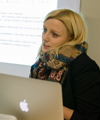
Bradas Marija
 marija.bradas@univr.it
marija.bradas@univr.it
 paolamaria.caleffi@univr.it
paolamaria.caleffi@univr.it
 veronica.gobbato@univr.it
veronica.gobbato@univr.it
 tiziana.mancinelli@univr.it
tiziana.mancinelli@univr.it
 silvia.zollo@univr.it
silvia.zollo@univr.it
Study Plan
The Study Plan includes all modules, teaching and learning activities that each student will need to undertake during their time at the University.
Please select your Study Plan based on your enrollment year.
1° Year
| Modules | Credits | TAF | SSD |
|---|
2° Year activated in the A.Y. 2018/2019
| Modules | Credits | TAF | SSD |
|---|
3° Year activated in the A.Y. 2019/2020
| Modules | Credits | TAF | SSD |
|---|
| Modules | Credits | TAF | SSD |
|---|
| Modules | Credits | TAF | SSD |
|---|
| Modules | Credits | TAF | SSD |
|---|
| Modules | Credits | TAF | SSD |
|---|
Legend | Type of training activity (TTA)
TAF (Type of Educational Activity) All courses and activities are classified into different types of educational activities, indicated by a letter.
History of Modern Art (2017/2018)
Teaching code
4S00852
Teacher
Coordinator
Credits
6
Also offered in courses:
- History of Modern Art of the course Bachelor's degree in Foreign Languages and Literatures
Language
Italian
Scientific Disciplinary Sector (SSD)
L-ART/02 - HISTORY OF MODERN ART
Period
Semester 1 dal Oct 2, 2017 al Jan 20, 2018.
Learning outcomes
HISTORY OF MODERN ART
Prof. Giorgio Fossaluzza
CREDITS 6
SSD L-ART/02
Bachelor in Foreign Languages and Cultures for Publishing
LANGUAGE Italian
Learning outcomes, methodology and course contents
This course is institutional in nature and aims to use new methods to enhance or supplement the art history background students have already acquired in their previous education. It allows novices of the discipline to engage with it gradually yet systematically and using a non-superficial approach.
The course is also designed to train all the students in “reading” works of art. Taking into account the multiplicity of existing methods in the study of art history, the course aids students in acquiring basic historical knowledge to instruct them, above all, in how to recognize and assess artwork in stylistic and qualitative terms. All of this is combined with the objective of providing the methodological and cultural bases for a well-informed reading of all the fields of the visual arts and images from any time period and context.
The introductory classes are therefore devoted to the various methods that contribute to knowledge about art history and related specialized disciplines. Students will also be provided with a basic dictionary of terms that they can translate into the chosen languages of their study programs. The initial lessons will employ a seminar format to focus on describing images as a preliminary exercise to prepare students to engage with the historical discipline.
The content, and time frame in particular, the leading figures and their languages, the contexts and techniques covered in this course are all chosen keeping in mind that, for the majority of students, ‘History of Modern Art’ is a preparatory course for ‘History of Illustration’. However, this history of art course addresses modern art on a European scale, what in the past was theorized as Western art, along with its fundamental connections, so as to be useful for students of foreign languages and literature.
Indeed, this course provides the framework of a diachronic route through modern art history from the late Gothic to Neoclassicism. It refers mainly to the Italian setting, but also references the milestones and key figures in the history of other European countries to provide comparative terms. In addition to the analysis of style, this course therefore also focuses on the contours and history of Italian and European art, that is, the historical and cultural context surrounding centers of artistic production and patronage.
In this regard the course seeks to provide the tools students need to recognize iconographic markers, to engage in an iconological consideration of certain works, to use sources and to understand the main techniques.
It also includes a section on the history of collecting and the development of the major European museums.
The goal is to offer students the opportunity to add an understanding of art history, or more generally of the visual arts with their specific idioms, to the knowledge they have already acquired in the study of languages and the history of foreign literature.
Program
Students are strongly recommended to consult the Italian version of the program, where several key concepts are outlined in more depth. The following list contains the Italian titles of the manual chapters that are assigned to be studied.
FIRST PART
1. L’alba del Rinascimento a Firenze. Contesto storico (manuale, 2012, vol. 2, pp. 14-19).
Filippo Brunelleschi: profilo, principi architettonici (prospettiva e modulo), committenze (pp. 20-31). Donatello: primo periodo fiorentino, soggiorno padovano, ultimo periodo (pp. 32-35; 38-39). Masaccio: linguaggio pittorico, opere e confronti (pp. 42-47).
2. La prima metà del Quattrocento in Toscana.
Beato Angelico, Filippo Lippi, Domenico Veneziano, Andrea del Castagno, Paolo Uccello, Benozzo Gozzoli. Manuale, 2012, pp. 52-61.
La scultura toscana del primo Rinascimento (Lorenzo Ghiberti, Iacopo della Quercia). Manuale, pp. 68-73.
L’edificio ideale di Leon Battista Alberti; i trattati (*da integrare con appunti delle lezioni e voce wikipedia). Manuale pp. 74-77 e pp. 80-81.
3. La pittura fiamminga e l’Italia.
Jan van Eyck, Rogier van der Weyden e gli altri pittori fiamminghi citati.
Manuale, 2012, pp. 64-67.
4. Piero della Francesca, profilo e opere. Manuale p. 86, pp. 92-99.
5. La Firenze medicea e l’Italia centro-meridionale.
Firenze: Verrocchio, Pollaiolo, Botticelli (manuale pp. 108-114 e pp. 126-127).
Umbria e Roma: Perugino, Signorelli (manuale pp. 115-117 e pp. 120-121).
L’Italia meridionale: Antonello da Messina (manuale pp. 122-125).
6. Il Rinascimento nell’area veneta.
Fra Tardogotico e Rinascimento (Rinascimento “umbratile”): Jacopo Bellini
Conseguenze della presenza di Donatello a Padova. Andrea Mantegna, Giovanni Bellini, (manuale pp. 131-135; pp. 138-141; pp. 144-148; Gentile Bellini e Carpaccio pp. 149-150).
SECOND PART
7. Il Cinquecento. Contesto storico e concetti principali: Maniera moderna e Manierismo (manuale pp. 175-181).
Bramante a Milano e Roma (pp. 184-191). Leonardo da Vinci (pp. 194-199; pp. 202-204; pp. 206-207). Michelangelo (pp. 210-223; pp. 226-230). Raffaello (pp. 233-245; 248-249).
Giorgione, Tiziano (pp. 252-261; pp. 264-270).
Lorenzo Lotto (pp. 276-279).
Correggio (pp. 280-283).
8. Il Manierismo.
Manierismus: concetto storiografico, sua formulazione tra Otto e Novecento (*da integrare con appunti delle lezioni e voce wikipedia, con particolare evidenza alla diaspora degli artisti conseguente al sacco di Roma del 1527).
Prima fase a Firenze: Andrea del Sarto, Rosso Fiorentino, Pontormo (manuale, 2012, pp. 289-294).
Lo stile clementino: Giulio Romano a Roma e a Mantova, Parmigianino. Manuale, 2012, pp. 295-299.
Seconda fase a Firenze: Bronzino, Cellini, Giambologna (pp. 302-303).
Il Cinquecento in Europa, Dürer tra Germania e Italia (pp. 314-319).
Veneto: Tintoretto e Veronese (pp. 327-335); Bassano (pp. 336-337); Sansovino e Palladio (pp. 338-345).
Note: Students are advised to organize their study process by postponing the introductory chapter on the Baroque (as mentioned in point 12) and instead beginning with the study of post-Tridentine art and Carracci (as indicated in point 10). To this latter part, they should add pp. 352-354 (as indicated in point 10 as well).
9. Arte post-tridentina. Contesto e artisti (manuale, 2012, pp. 352-354). L’Accademia dei Carracci a Bologna e Annibale Carracci a Roma (pp. 377-381). Il classicismo a Roma dopo i Carracci (pp. 386-388).
(*Supplement this part with the chapter about Poussin and Lorrain “Sviluppi del classicismo”, found in the handouts and taken from Arte nel tempo, vol. 2, ed. by P. De Vecchi, E. Cerchiari, Bompiani).
10. Caravaggio. Profilo e opere (manuale pp. 391-395; pp. 400-403). L’eredità della pittura di Caravaggio (pp. 404-405).
11. Il Barocco. Contesto (manuale pp. 372-376).
Bernini e Borromini (pp. 410-429). La pittura barocca, l’opera di Pietro da Cortona (pp. 438-443). Guarini e Longhena (pp. 430-434).
12. La pittura europea nel Seicento. Contesto e protagonisti in Francia, Spagna, Fiandre, Province Unite (manuale pp. 453-457), Velázquez (pp. 460-461).
Rubens, profilo e opere (p. 453, p. 456).
Inigo Jones e il neopalladianesimo (*da integrare con appunti delle lezioni e voce wikipedia).
13. Il Rococò. Caratteristiche e centri (manuale pp. 472-481).
Il vedutismo (pp. 487-489). Tiepolo, profilo, Würzburg (pp. 490-493) e il decennio spagnolo.
14. Il Neoclassicismo. Contesto storico-culturale (manuale, 2012, vol. 3, pp. 13-16; pp. 18-19, dispensa in copisteria). Winckelmann (p. 20). David, profilo (pp. 21-25). Canova, profilo (pp. 26-31).
Inquietudini preromantiche: Füssli e Goya (pp. 63-67).
Topics for Erasmus students
First part
1. Brunelleschi and his architectural principles
2. Donatello: itinerary, the two florentine periods and the sojourn in Padua with main works
3. Masaccio
4. Leon Battista Alberti: treatises and works
5. Mantegna
6. The Flemish school
7. Piero della Francesca
8. Giovanni Bellini
9. Antonello da Messina
10. Firenze and Lorenzo il Magnifico, historical context, Botticelli, Verrocchio, Pollaiolo
Second part
11. Leonardo
12. Michelangelo
13. Raffaello
14. Giorgione and Tiziano
15. Mannerism: concepts and artists
16. After Counter-Reformation, Carracci, Annibale Carracci in Rome and Classicism
17. Caravaggio
18. Bernini and main characteristics of Baroque art
19. The 17th century protagonists in Europe, with reference to geography and history: Poussin, Rubens, Rembrandt, Vermeer, Velasquez
20. Rococo in Europe and Italy with reference to geography and history: general style characteristics and main artists
21. Tiepolo and Canaletto
22. Neoclassicism and Canova
Additional chapters to the manual on Neoclassicism (vol. 3) and other handouts are available at the copy shop ‘Replay’. Introductory topics and terminology: lecture notes.
| Author | Title | Publishing house | Year | ISBN | Notes |
|---|---|---|---|---|---|
| C. Fumarco, L. Beltrame | Vivere l'arte 2. Dal Rinascimento al Rococò | Mondadori | 2012 |
Examination Methods
Final Exam: Written test
The test consists in
- a questionnaire composed of 5 questions on topics relating to the period from the early Renaissance to the 15th century
- a second questionnaire, also made up of 5 questions on topics relating to the period from the 16th century to Neoclassicism
In the same exam (4 hours long), students may choose to be tested on only the first questionnaire or on both questionnaires . If they choose to split the test into two sections, they must follow a set order: a first exam focused on the questionnaire covering the first period (from the early Renaissance to the 15th century) and, only if they pass that exam, a subsequent one focused on the questionnaire covering the timespan from the early 16th century to Neoclassicism.
The exam questions may concern an author’s profile (ex. Donatello and his periods - for instance Donatello in Padua - Bernini, Canova) or the context in which he worked, or more general concepts (ex. Maniera Moderna, Mannerism, Baroque, Neoclassicism, with examples). Some questions might also focus on the profiles of artists of “lesser” standing (ex. Botticelli and Laurentian age, Verrocchio and Pollaiolo in comparison), or single works of art (ex. Ghent Altarpiece, Cappella Brancacci, Caravaggio in San Luigi dei Francesi, Cappella Cornaro). The questions consist of multiple components in order to suggest a possible “progression” among arguments or facilitate thematic links, thereby pushing students to go beyond flat, superficial summaries of the material.
Type D and Type F activities
To discover all the teaching activities accredited by the foreign teaching college click here
Career prospects
Module/Programme news
News for students
There you will find information, resources and services useful during your time at the University (Student’s exam record, your study plan on ESSE3, Distance Learning courses, university email account, office forms, administrative procedures, etc.). You can log into MyUnivr with your GIA login details: only in this way will you be able to receive notification of all the notices from your teachers and your secretariat via email and soon also via the Univr app.
Student login and resources
Assegnazione tutore
Attività accreditate D/F
Calendario didattico dettagliato
Cambio lingua curriculare
Competenze informatiche
Competenze linguistiche (prima e seconda lingua)
Competenze linguistiche in triennale (terza lingua CFU F)
Compilazione del piano didattico
Corso di Lingua portoghese
Erasmus+ e altre esperienze all'estero
Linguistic training CLA
Graduation
List of theses and work experience proposals
| Stage | Research area |
|---|---|
| PROGETTO MAMBRINO Stage per bibliografia | Various topics |
Stage e tirocini
Nel piano didattico della laurea triennale in Lingue e culture per l’editoria (L11 ED) è previsto un tirocinio/stage obbligatorio (CFU 6).
Le attività di stage sono finalizzate a far acquisire allo studente una conoscenza diretta in settori di particolare interesse per l’inserimento nel mondo del lavoro e per l’acquisizione di abilità professionali specifiche.
Le attività di stage sono svolte sotto la diretta responsabilità di un singolo docente presso studi professionali, enti della pubblica amministrazione, aziende accreditate dall’Ateneo veronese.
I crediti maturati in seguito ad attività di stage saranno attribuiti secondo quanto disposto nel dettaglio dal “Regolamento d’Ateneo per il riconoscimento dei crediti maturati negli stage universitari” vigente.
- Tutte le informazioni in merito agli stage per futuri studenti sono disponibili alla pagina Stage e tirocini.
- Tutte le informazioni in merito agli stage per studenti iscritti sono pubblicate in MyUnivr - come fare per - stage e tirocini.
- Tutte le informazioni in merito agli stage per le aziende sono disponili alla pagina Stage e tirocini per azienze.
Ulteriori informazioni al seguente link https://www.univr.it/it/i-nostri-servizi/gestione-carriere-studenti-lingue-e-letterature-straniere/stage-e-tirocini-lingue-e-letterature-straniere
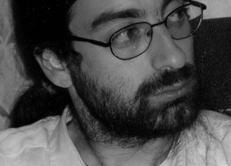
 +39 045802 8409
+39 045802 8409

